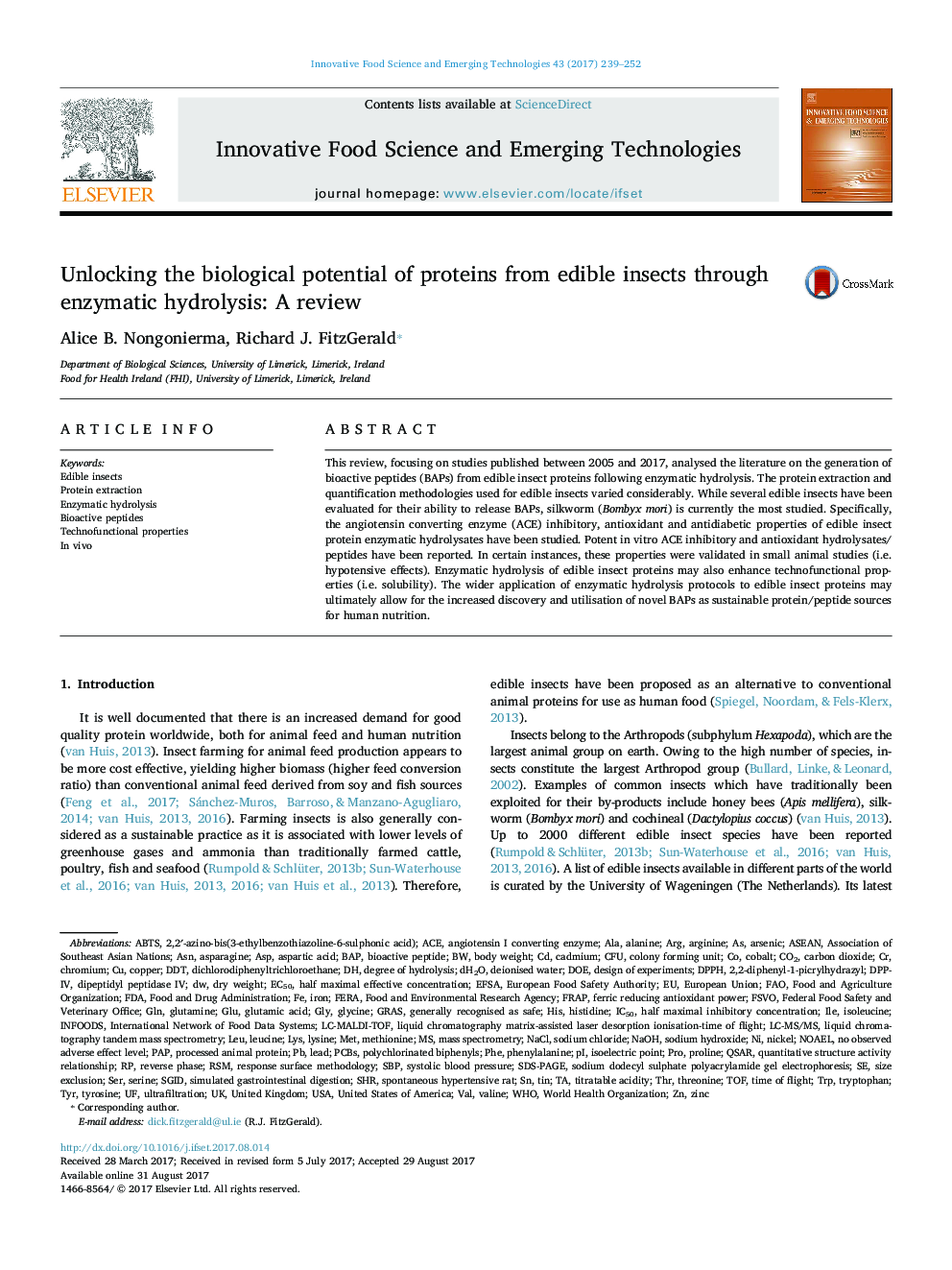| Article ID | Journal | Published Year | Pages | File Type |
|---|---|---|---|---|
| 5521707 | Innovative Food Science & Emerging Technologies | 2017 | 14 Pages |
â¢Bioactive peptides (BAPs) derived from edible insect proteins were reviewed.â¢Bombyx mori is the most studied insect for the generation of BAPs.â¢Potent edible insect protein-derived BAPs were identified in vitro and in vivo.â¢The safety of insect protein hydrolysates has been demonstrated in small animals.â¢Edible insect proteins appear as a sustainable source of BAPs for human nutrition.
This review, focusing on studies published between 2005 and 2017, analysed the literature on the generation of bioactive peptides (BAPs) from edible insect proteins following enzymatic hydrolysis. The protein extraction and quantification methodologies used for edible insects varied considerably. While several edible insects have been evaluated for their ability to release BAPs, silkworm (Bombyx mori) is currently the most studied. Specifically, the angiotensin converting enzyme (ACE) inhibitory, antioxidant and antidiabetic properties of edible insect protein enzymatic hydrolysates have been studied. Potent in vitro ACE inhibitory and antioxidant hydrolysates/peptides have been reported. In certain instances, these properties were validated in small animal studies (i.e. hypotensive effects). Enzymatic hydrolysis of edible insect proteins may also enhance technofunctional properties (i.e. solubility). The wider application of enzymatic hydrolysis protocols to edible insect proteins may ultimately allow for the increased discovery and utilisation of novel BAPs as sustainable protein/peptide sources for human nutrition.
